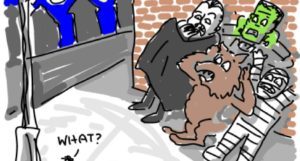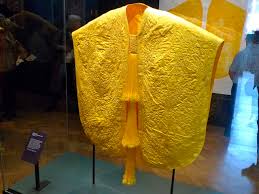Podcast: Play in new window | Download (Duration: 17:17 — 17.8MB)
Those of us in the northern hemisphere are thinking a lot about island life right about now, where it’s warm and sunny. But there are islands everywhere, not just the tropics, and the animals on islands often evolve to look strange and different from their mainland cousins. Thanks to Richard E. and Lucy for their suggestions this week!
A fossa:
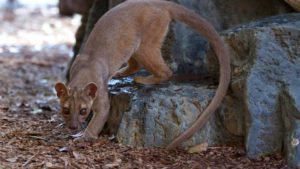
A tamaraw, miniature water buffalo:
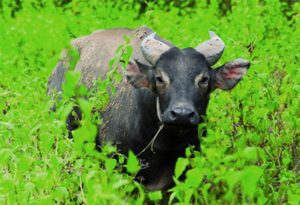
A Socotra starling, my new favorite bird:
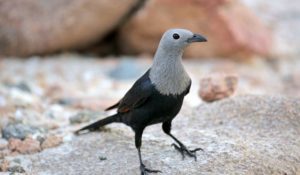
Adorable little Galapagos penguin:
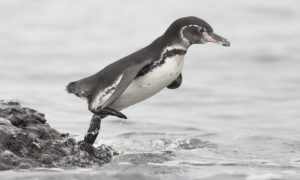
A dragonblood tree, good grief!
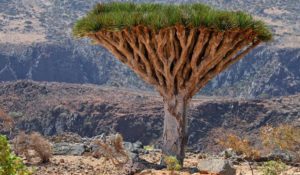
A blue baboon. It’s not a baboon but it is blue:
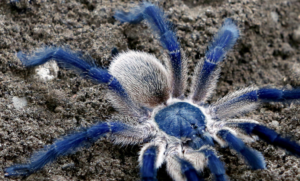
A ground dragon:
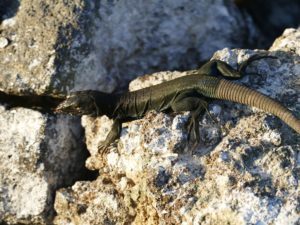
Further listening:
The unlocked Patreon bonus episode about vampire finches on the Galapagos Islands
Show transcript:
Welcome to Strange Animals Podcast. I’m your host, Kate Shaw.
In a lot of episodes, we talk about animals from islands like the Galapagos and the Canaries. There’s a reason why islands give rise to strange animals. This week we’ll focus on island life—how island habitats lead to unique animals and how introduced animals can destroy an entire island ecosystem in a matter of a few years. Massive thanks to listener Richard E., who suggested the topics of introduced animals and island life!
Islands, of course, are surrounded by water and isolated from larger landmasses as a result. Some are close to the mainland so it’s easy for animals to swim or float across to the island. In cold areas, animals can sometimes walk across ice to islands. But other islands are more remote, or used to be close to the mainland but were pushed farther away by tectonic forces.
Once a piece of land is cut off from the mainland, the animals and plants on that piece of land start to evolve independently of the larger population of animals and plants on the mainland. If the island is isolated enough that potential predators can’t get to it, the animals already living on the island start to adapt to life with no or few predators. As a result, they may appear tame when humans arrive.
And that is where the problems start. Humans don’t just arrive alone. We bring other animals with us, either on purpose, like dogs, cats, and livestock, or by accident, like rats and mice. And these animals, along with humans, can destroy an entire island habitat really easily.
I’ll use one of Richard’s examples, since it’s a good one and not one you’d think of when thinking of islands. The red squirrel is native to Europe and parts of Asia, but it also lives in the UK and Ireland. It’s usually red-brown in color, although some populations can be brown, gray, or even black. The belly is white. It has long ear tufts and a poofy tail. It lives in trees and eats seeds, nuts, berries, fungi, and occasionally eggs or baby birds.
But remember, Ireland and the UK are islands. And in the 1870s, someone thought it would be really great to import eastern gray squirrels from North America and release them in parks in the UK. In Ireland, in 1911 someone gave a bunch of gray squirrels as a wedding gift, which is not a great gift, honestly, and they got loose because of course they did. They’re squirrels.
Grey squirrels are larger than red squirrels and don’t have ear tufts. They eat the same foods red squirrels do. They also carry a disease called squirrel parapoxvirus that doesn’t bother them but which kills red squirrels. The population of red squirrels has dropped substantially as introduced gray squirrel populations climb in the UK and Ireland. The red squirrel is now protected, with conservation efforts in place that are making a difference. But that just goes to show how easy it is to lose even a well-established species on large islands when an outside species is introduced.
On islands, especially smaller islands, small animals tend to grow larger overall and big animals tend to grow smaller overall. This is called Foster’s rule. It comes about partly because there are fewer predators but limited resources. Small animals don’t need to hide as carefully from predators, large animals may not be able to get enough to eat, but medium-sized animals are able to survive short famines without starving and can take advantage of some resources smaller or larger animals couldn’t use.
One example of island gigantism is the fossa, a predator from Madagascar. If you’ve seen the Madagascar movies, you might remember the fossa as a scary predator that looks something like a big cat. Well, the fossa is a real animal, but it’s not related to cats. It’s related to the mongoose, which is a weasel-like animal, but the fossa is generally much larger than a mongoose. It grows some five feet long, or 1.5 meters, including its tail, although its legs are short compared to those of a similarly-sized cat. It spends a lot of time in trees, where it uses its long tail to help it balance. It’s reddish-brown with a paler belly and eats lemurs and other mammals, birds, insects, crabs, lizards, and even fruit.
An example of island dwarfism is the tamaraw from the island of Mindoro in the Philippines, also called a Mindoro dwarf buffalo. It looks like its close relative, the water buffalo, but is much smaller, only about three and a half feet tall at the shoulder, or 105 cm. It’s like a pocket-sized water buffalo. It has V-shaped horns and is black with some white markings on the legs. It prefers to live in mountainous forested areas with water nearby, and it eats grass, young bamboo shoots, and wild sugarcane. It’s a solitary, shy animal.
Famously, Charles Darwin worked out the theory of evolution after examining the differences in finches living on the various Galapagos Islands. He had actually already started thinking along these lines before he’d really examined the finches, but they supported his ideas and helped him work out the details. Basically, as Darwin eventually determined, a type of finch had colonized the islands at some point in the far distant past. Each island had slightly different ecology, so although the finches could fly, over the years populations living on separate islands began to adapt to better fit the resources available on those islands. For instance, the large ground finch has developed a short, heavy bill to crack nuts, while the closely related vampire ground finch has a thinner, sharper bill that it uses to eat insects, seeds, and the BLOOD OF OTHER BIRDS. I am totally not making this up. In fact, I covered the vampire finch in a patreon bonus episode earlier this year. It’s already unlocked for anyone to listen to, so if you haven’t listened to it and want to, I’ll put a link in the show notes.
Remember that squirrel disease I mentioned earlier? There’s a bird disease called avipoxvirus, or avian pox, that has affected the Galapagos finches since 1898. Researchers think it was probably spread by humans who brought infected domestic birds with them on ships. Fortunately, it hasn’t driven any finches or other birds to extinction.
Another problem brought to the Galapagos Islands by humans, this one spread more recently by tourist boats, is a parasitic nest fly that kills baby birds. Researchers have started leaving cotton balls treated with a mild insecticide where the flies are known to attack endangered finches. The parent finches use the cotton balls to line their nests, which helps protect the babies once they hatch. The nest flies lay their eggs in the nests, and the larvae bite babies and mother birds and drink their blood, which can kill the babies. So far the treatment has helped reduce the number of larvae that hatch.
There’s another bird that lives on the Galapagos that is unique to the islands, and that’s the Galapagos penguin. Thanks to Lucy, who suggested it as a topic, and a shout-out to Lucy’s sister Willa too!
Lucy also wanted to hear about King and Gentoo penguins, so let’s start with them. Both species mostly nest on islands.
The King penguin is almost as big as the Emperor penguin and looks very similar, not surprising since they’re closely related. It stands over three feet tall, or 100 cm. It eats small fish, squid, and krill. Females lay one egg at a time and after the egg hatches, the baby spends its first month or so of life sitting on one parent’s feet while the other parent forages. After that both parents leave the baby in a communal nest, called a crèche, while both go foraging. A young king penguin won’t be able to fish for itself until it’s more than a year old.
The Gentoo penguin lives off the southern tip of South America, and it’s almost as tall as the king penguin, but it’s not closely related to the king and emperor penguins. The Gentoo penguin has a reddish bill and a white stripe on its head above its eyes. The female usually lays two eggs in a nest made of round stones. Gentoo penguins value good nesting stones, and a male may court a female by offering her high-quality stones. Sometimes he has stolen those good stones from other penguin nests. Watch out, ladies. The Gentoo penguin eats krill and other small crustaceans for the bulk of the diet, and also eats fish and squid.
So that gives us a sort of baseline of ordinary penguins to compare to the Galapagos penguin. All other penguins all live in the southern hemisphere, usually not all that far from Antarctica. Part of the Galapagos Islands are in the northern hemisphere, although just barely. Penguins are adapted to severe cold, so how do Galapagos penguins thrive near the equator? As it happens, the waters around the Galapagos are actually quite cold, with various oceanic currents bringing cold water north from the Antarctic and bringing cold water from the depths to the surface in the area. Unlike other penguin species, which often travel widely to find food, the Galapagos penguin stays near the islands where the water is comfortably cool and there’s enough food. On hot days, penguins go into the water to stay cool.
The Galapagos penguin is only about 19 inches tall, or 49 cm. It’s almost the smallest penguin and is definitely the rarest penguin, with only about 1,000 breeding pairs. It mates for life and females lay one or two eggs, making sure to lay eggs in the shade so they won’t get too hot in the sun. If both eggs hatch, the weaker baby usually dies as the parents concentrate on feeding the stronger one. Then again, in good years, grown babies who have moved out of the nest may continue to beg their parents for food and sometimes get fed. I know some people like that. In addition to ordinary predators like seals and hawks, the Galapagos penguin is also vulnerable to introduced predators like cats.
We’ve talked a lot about the Galapagos Islands, but every island has its own unique ecosystem. For example, the island of Socotra lies in the Arabian Sea off the coast of Yemen. It’s only 82 miles long, or 132 km, and 31 miles wide, or 50 km. There are three other, smaller islands nearby. It’s been so isolated for so long that even its trees are bizarre-looking, like the dragon’s blood tree that has dense branches with leaves sticking up at the very top so that it looks like grass growing on top of a weird tree-shaped cliff. The tree also has red sap that has been traditionally used as a dye or varnish.
Humans have lived on the Socotra for 2,000 years, so many endemic species have gone extinct due to habitat loss, hunting, and competition or predation by introduced animals like cats and cattle. But there are still a lot of unusual animals that are found nowhere else in the world. The island has only one native mammal species, a bat, and no amphibians, but it has lots of reptiles and some birds found nowhere else in the world. For instance, the Socotra starling. It’s a large, beautiful songbird with a black body and soft gray head and neck, a heavy black bill, and a black eye with a thin white eye ring. It eats insects and fruit. Socotra is also surrounded by coral reefs with lots of unique fish and crabs.
One interesting animal that lives on Socotra Island is called the blue baboon. But it’s not a baboon or any other kind of primate. It’s not even a mammal. It’s a tarantula, and it’s beautiful! It’s a lovely indigo blue in color with white hairs on the abdomen and the top joints of the legs. Its legspan is about five inches across, or 12 cm, and males are smaller than females. Unlike most other tarantula species, it tolerates others instead of being solitary, so people often keep them as pets. Fortunately, it’s become so popular in captivity that there are lots of captive-bred blue baboons readily available, so the market for illegally collected wild specimens has diminished.
I’ve talked a lot about how animals in island habitats can be driven to extinction very easily, but there are success stories too. For instance, the island of Redonda. It’s a tiny island in the Caribbean, only about a mile long, or 1.6 km, with no source of fresh water and land that’s basically just rock. For centuries no one bothered Redonda because no one wanted to live there, but in the late 19th century it was mined for bird guano, or bird poop, which was used as fertilizer. This went on until 1914, and then in 1929 a hurricane destroyed what was left of the mining equipment. The few people who lived there left, but there were still rats and feral goats that ate everything they could find.
Redonda might have become a wasteland with nothing but rats, goats, and a few birds, but an ambitious conservation effort is paying off. First, the rats and goats were trapped and removed from the island. The rats were mostly killed, but the goats were taken to nearby Antigua where they’ve found homes. Then—and this is important—people left the island alone. Without introduced species and without human interference, the population of endemic animals have begun to rebound. Native plants and trees have started growing back. Rare seabirds nest there again. Instead of a big rock, the island now appears green again.
And the population of lizards on the island is rebounding like crazy. In just a year, the number of ground dragons has almost doubled. Ground dragons are lizards only found on the island. They’re shiny black with long tails and eat pretty much anything they can catch, including young ground dragons.
Sometimes all it takes for nature to be set right is to just leave it alone to do what it does best. Sometimes humans have to help by restoring keystone species to a habitat. This has happened with giant Aldabra tortoises, which were once common on the island of Mauritius, the same island where the dodo once lived. A species of ebony tree had nearly been driven extinct by logging, but even after logging was stopped in the 1980s, the trees hadn’t rebounded. Researchers determined that giant tortoises had once eaten the ebony tree fruit and pooped out the seeds, much like the dodo and the rare dodo tree palm. When giant tortoises were reintroduced to Mauritius, new ebony trees started to sprout.
You can find Strange Animals Podcast online at strangeanimalspodcast.com. We’re on Twitter at strangebeasties and have a facebook page at facebook.com/strangeanimalspodcast. If you have questions, comments, or suggestions for future episodes, email us at strangeanimalspodcast@gmail.com. We also have a Patreon if you’d like to support us that way.
Thanks for listening!
